Your tires are talking to you— here’s how to understand them
The tires on your vehicle are critical to its performance and to your safety. Knowing what type of tire your vehicle needs and how to determine the age of your tires is essential. Everything you need to know is stamped on the tire sidewall; this article will help you decipher the letters and numbers so you understand exactly what the tire is telling you.
In addition to the brand name of the tire (Bridgestone, Continental, Michelin, and so on) and the model names of the tire, the data stamped on the sidewall is there mainly to satisfy government regulations, which require a wide range of information—including when and where the tire was manufactured and how durable it is.
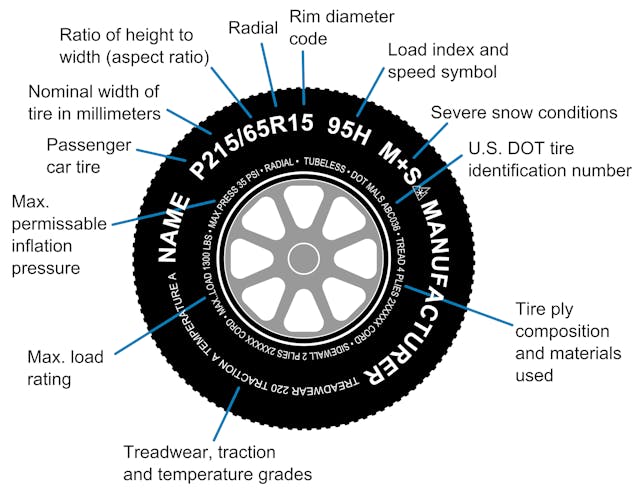
P215/65R-15
This set of numbers tells you the size of the tire. The first number tells you the width of the tire in millimeters. In this example, the tire is 215 millimeters wide. The number after the / slash tells you the height of the sidewall, which is expressed as a ratio of the tire’s width. Often referred to as the tire’s aspect ratio, or profile, this tire’s sidewall height is 65 percent of its width. In this case, the sidewall height is 139.75 millimeters.
The “R” means the tire has radial construction (less common bias-ply and belted tires are denoted by a D and B, respectively).
The number “15” indicates that this tire fits a 15-inch wheel. Very often, a letter will precede the first number. A “P” stands for p-metric, which is a tire used mainly on passenger cars. An “LT” indicates a light-truck tire. A “T” means that it’s a temporary spare. Some tires have a “Z” or an “F” attached to the radial indicator, denoting a Z-rated tire or a run-flat tire.
93H
This alphanumeric code is the service description, which provides two essential pieces of information about the tire’s performance capabilities: how much weight it can carry and the maximum speed at which it can safely operate—the latter is a good indication of whether the tire is intended for a family sedan or a sports car. In our example, the “93” stands for the maximum-load rating of 1521 pounds. The letter “H” denotes the maximum speed rating, which translates to 130 mph.
The list of speed ratings below range from a low of “L” (just 75 mph for some off-road tires) to a high of “Y” (186 mph). There is also one special ultrahigh speed rating: If a Y-rated tire has parentheses around its service description, say, (93Y), that means the tire is rated for speeds “in excess of 186 mph.” There are also Z-rated tires, but when that designation originally came out, no one thought a speed rating higher than 149 mph would ever be needed. By definition, all W- and Y- rated tires are also Z-rated, though not all get a “Z” embossed on the sidewall.
- L – 75 mph
- M – 81 mph
- N – 87 mph
- P – 93 mph
- Q – 99 mph
- R – 106 mph
- S – 112 mph
- T – 118 mph
- U – 124 mph
- H – 130 mph
- V – 149 mph
- W – 168 mph
- Y – 186 mph
- (Y) – more than 186 mph
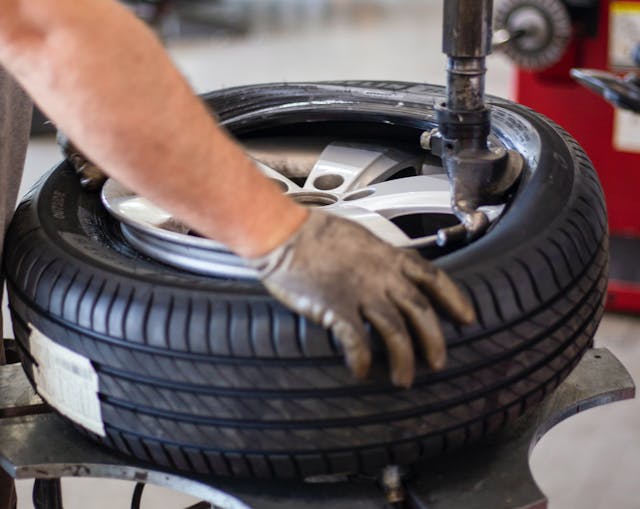
The numbers after the word “treadwear” reveal the treadwear of the tire, or how long it’s likely to last. The higher the number, the greater likelihood that you’ll get more miles out of it. However, the tests used to determine tread life are not exact. As a result, consider this number as an indicator, but not a precise measurement, of how long a tire will last.
The letter after the word “traction” references a rating that comes from a test of the amount of grip that a tire generates when it is dragged across wet pavement without the tire rotating. It’s not relevant to modern cars, which feature anti-lock brakes that keep the tires rolling even during emergency braking. The letter after the word “temperature” is an indicator of how well a tire dissipates heat. Again, it is less important than the tire’s speed rating, which takes this factor into account.
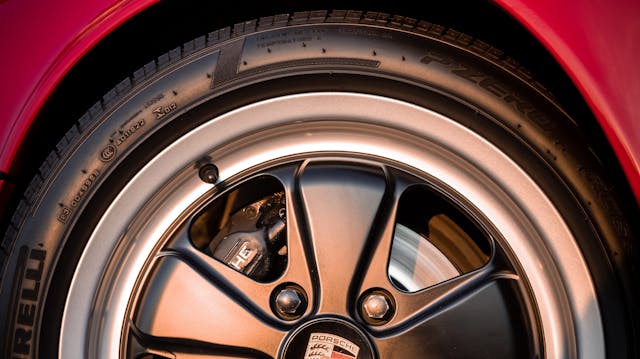
Some tires feature an “M+S” stamping, which stands for “mud and snow.” This means that the tire has some additional capability in such conditions because it has a little extra space between its tread blocks. However, M+S tires are most definitely not winter (snow) tires and might not even be conventional all-season tires. That’s where the three-peak mountain snowflake icon next to the M+S mark comes in. If a tire has that molded into its sidewall, it has significant snow capability and should be considered a viable winter tire.
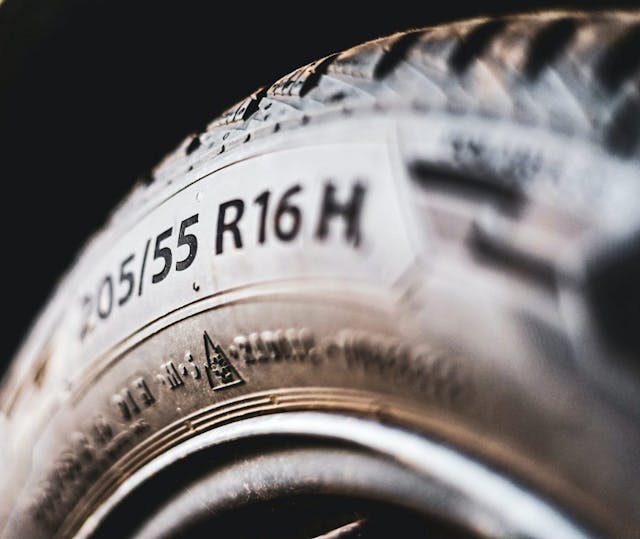
Every tire sold in the U.S. must have U.S. Department of Transportation (DOT) labeling. The first two characters indicate the factory of manufacture, and the next five or six are manufacturer-specific jargon (for tracking purposes, as in the case of a recall). The last four numbers give the date of production which tell you the age of your tires. The first two digits indicate the week and the latter two the year (for example, “2318” means that tire was produced in the 23rd week of 2018).
Hagerty understands the importance of having a good set of tires, which is why the Drivers Club offers discounts on tire purchases for its members:
- BFGoodrich® offers Hagerty Drivers Club a $100 Visa® Gift card with the purchase of four new BFGoodrich® Radial T/A® tires.
- Coker Tire offers Drivers Club members a 10% discount off everything available at Coker Tire’s online shop.
- Michelin® offers members a $100 Visa® Reward Card per purchase of any set of four (4) new MICHELIN® passenger or light truck tires**. Offer valid for up to (3) vehicles per household.
In addition to discounts on tires, Hagerty Drivers Club offers its members a wide range of benefits that are invaluable when it comes to helping owners care for their vintage rides. There are discounts from California Car Cover Co., Griot’s Garage, and Reliable Carriers as well as 24/7 roadside assistance. Members also receive our award-winning magazine, exclusive members-only events, and more.
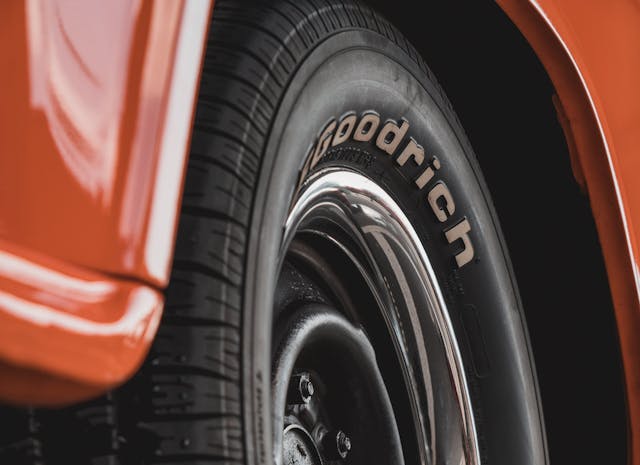


Hi:
How do I submit the required information for the Michelin reward caard?
Thanks.